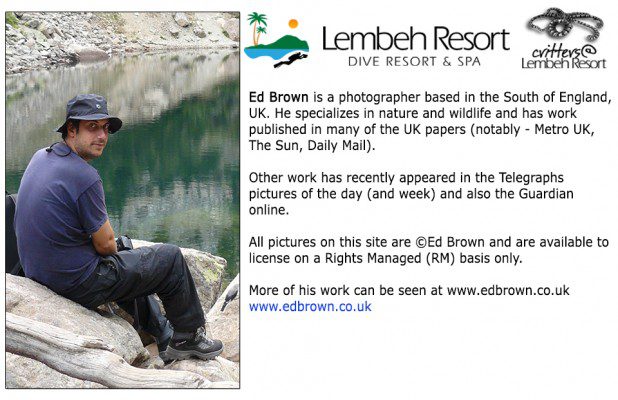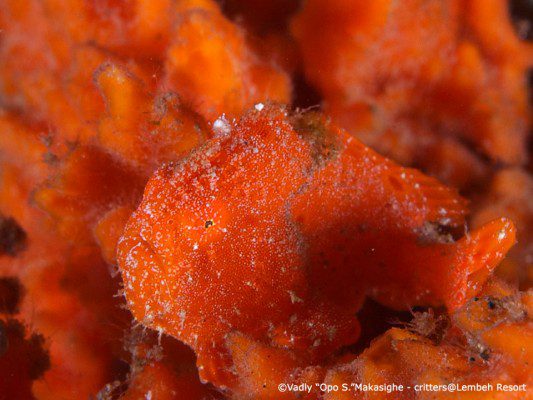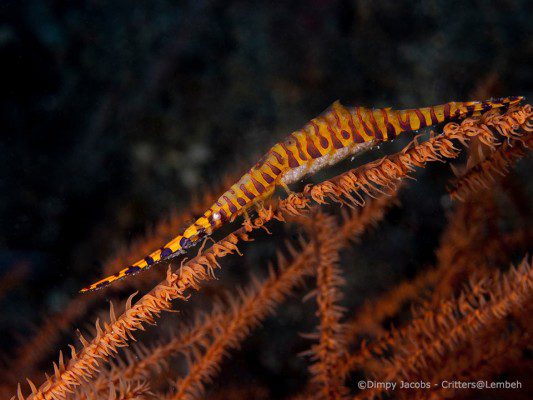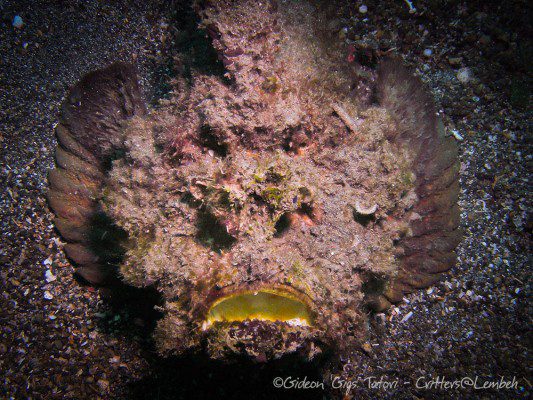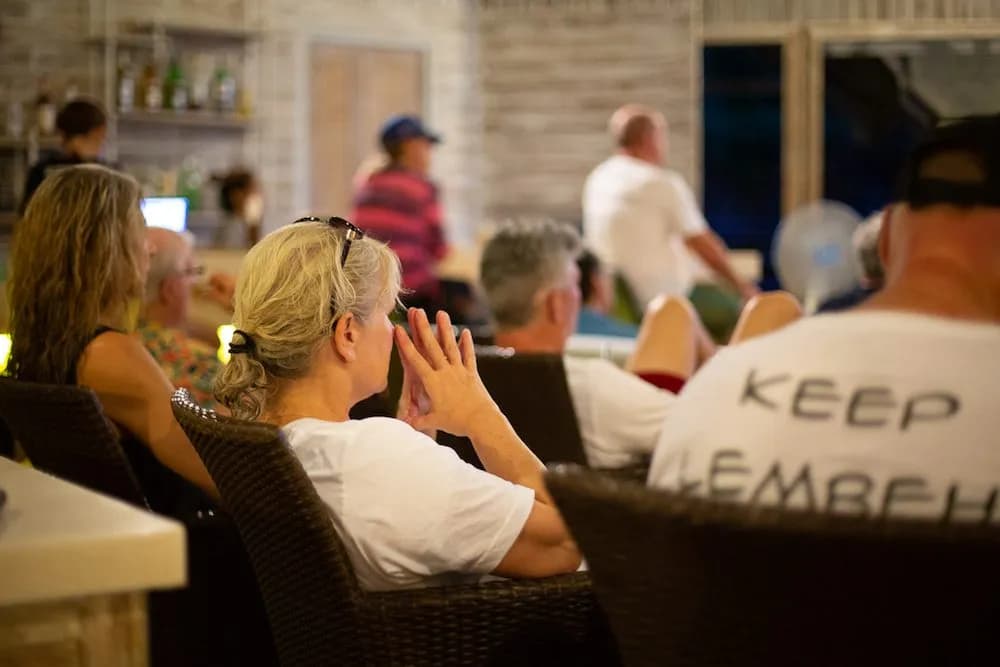Hide & Seek – Part I
“See that tiny frogfish”
“Nope”
“It’s there”
“Oh yeah, cool huh”
That’s how a conversation on land might pan out, underwater is a different matter though. Its really not that simple to point out a critter that doesn’t want to be seen, but the guys at critters@Lembeh Resort all carry slates & actually use them to communicate! Strange concept I know. Having been to various countries around the world, I’ve seen plenty of divers agreeing to have seen something when its clear they haven’t. I’ve lost count of the number of times I’ve heard “Well I saw something, but didn’t know what you were looking at” So, slates in hand, the guides here are well prepared for pointing out critters, even to those of us who have the occasional bout of brain fog. For me, muck diving is all about the critters, of course, but more than that, its the way that almost everything has adapted by using camouflage to its own purpose.
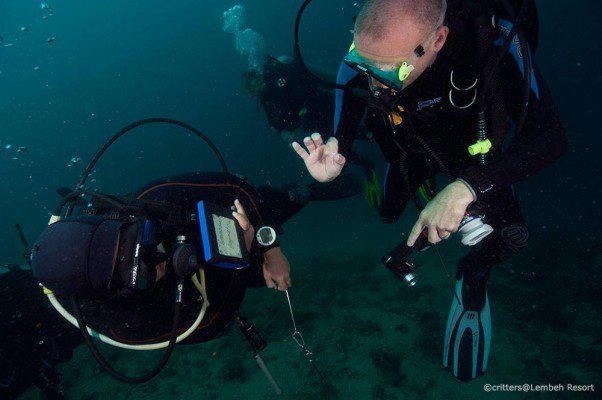
critters@Lembeh Resort dive guide all carry slates & actually use them to communicate!
So a frogfish with identical colouring to a sponge can use that camouflage to ambush its prey, but, even on its own, without the colouring to blend into, it still looks like a sponge. Another favourite of mine, the Tozeuma shrimp, will lie motionless against whip corals or hyrdoids, and actually in photographs appears to jump out at you rather than be camouflaged, take away the flash from that picture though and you’ll see just how suited these shrimps are to their environment. Camouflage patterns and colourings are not just for the little guys though, the markings on flounders, scorpionfish or even crocodile flatheads are all perfectly in balance to allow them to practically disappear in front of our eyes. Those little feathery flaps of skin may look pretty, and they are, but they also break up the outline of the fish to enable them to hide in plain sight.
Painted frogfish, displaying a zen-like mastery of “being” the sponge upon which it rests.
Tiger Tozeuma Shrimp carrying eggs: not roaring, but rather camouflaged on its host, a black coral bush.
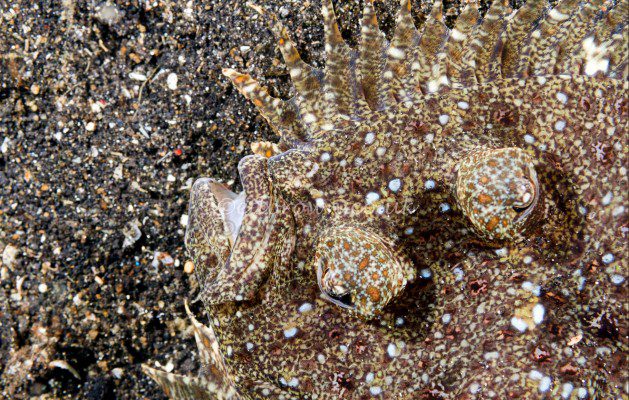
A flounder expertly camouflages itself on a sandy sea bed and can instantly change the colour of its skin to match dark or light-coloured sand
This venomous stonefish, visible in the photo due to the photographer’s lighting and an open mouth, normally looks exactly like a stone or part of the reef
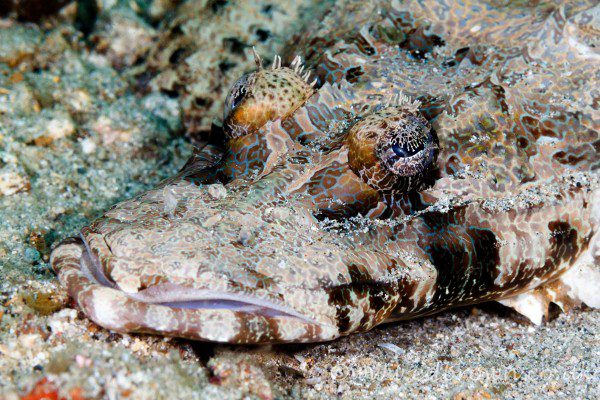
This crocodile flathead even has camouflaged eyes – take a close look at the delicate pattern which makes the eye’s pupil look like part of the marine environment
I guess I cant write a piece on camouflage and ignore the most interesting, to me anyway, group, known as cephalopods. The group includes octopus, cuttlefish and squid but the octopus in particular holds a special interest for me. How can you not love a creature that can alter its appearance to match its background, not only in colour but also in shape? Many species use bright colours as a defence mechanism or warning sign, but an octopus can do it all, and then disappear against a sandy seabed, or coral outcrop, all in the space of a second or two. Not to worry though, your critters@Lembeh Resort guide will have it all written down for you!
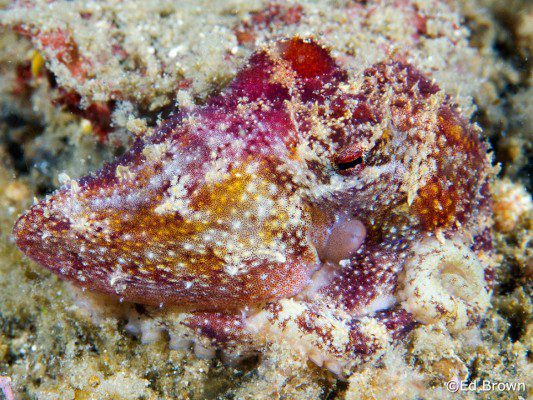
A beautiful Mototi or Poison Oscellate octopus who, like other octopus species, employs a sophisticated system involving muscle control and chromatophores to be able to change both skin texture and colour faster than you can say “Wow!”
A Note About the Author:
